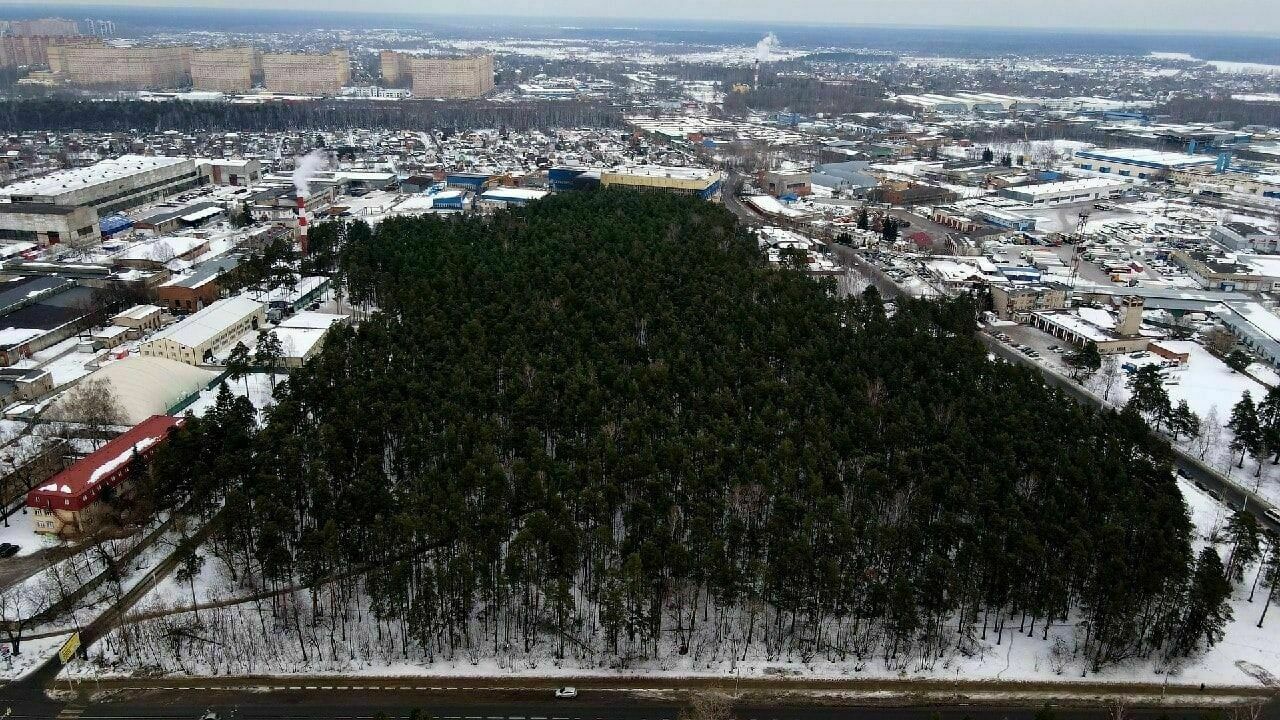Posted 13 марта 2023, 13:11
Published 13 марта 2023, 13:11
Modified 13 марта 2023, 14:22
Updated 13 марта 2023, 14:22

What can be seen behind the trees: forests and parks are being cut down in Russian cities
Instead of walking, get an elite school
In St. Petersburg, residents of the Zelenogorsk municipality have been trying for two years to defend a piece of forest where Gazprom wants to build a boarding house for 2,000 employees' children. The disputed site is located in the Resort area, formally it is the territory of St. Petersburg, but in fact it is a quiet suburb: the shore of the Gulf of Finland, small villages and a forest. People come here to relax from all over the city: walk between the pines, go to the water, go skiing or cycling. People do not agree that instead of a full-fledged forest there will be a private boarding house, and the territory will obviously be closed to the public.
"This is an area of 28 hectares, a beautiful pine forest, part of the reserves "Shchuchye Lake" and "Komarovsky Coast", this is a single complex, but once a border was drawn", - says activist Sergey Bugashev, "as a result of various urban planning plans, this site was transferred to the category of land for residential housing. Now this forest is actively used. Nearby is the territory of the Priboy sports base, in winter there are ski trails, in summer it is the same place of rest as the neighboring nature reserves. This is one of the last untouched sites in the near suburbs of St. Petersburg, very close to the Zelenogorsk station. The forest is in demand by people and is valuable."The activists collected the necessary amount and ordered a survey of the site from specialists of the Russian Academy of Sciences, which revealed about 2,600 pines and firs.
The age of the trees is from 60 to 120 years. This is a healthy forest with a minimum of dead wood. Scientists have discovered 6 species of mosses and lichens listed in the Red Book of St. Petersburg, 9 species of endangered birds, animals and reptiles, 5 species of red book insects.
The townspeople tried to protect the territory in various ways. For example, 288 applications were submitted for the inclusion of the site in the ZNOP (list of public green spaces where construction is prohibited). But the applications were ignored. In addition, 100 proposals to the General Plan were asked to transfer the site from the residential development zone to the zone of forest parks and urban forests. These appeals have not yet been considered.
One of the attempts was made by people during the public discussions of the project initiated by Gazprom. Activists sent 286 statements criticizing the project and demanding to abandon it.
"According to the plans that were made public, we are allegedly talking about a boarding house, this is a place of long-term stay of children of Gazprom employees, neither Zelenogorsk, nor the Resort district, nor St. Petersburg as a whole receive anything from this project", - says Sergey Bugashev, "besides, there are big doubts that it will be a boarding house. Most likely, this is a village where, perhaps, there will be a boarding house. Talk about it has been going on for two years. But a month ago, everything went from plans to business. The project has passed public discussions. To our objections, of which there were several hundred, we received the standard answer that it was not a forest. We believe that it is necessary to leave this territory alone, to change the purpose of the land, ideally, to include it in the reserve. It doesn't matter who cuts down the tree, Gazprom or someone else, it's important that it was cut down".
According to the activist, concerned citizens are preparing to file a lawsuit to challenge the results of public discussions, but they believe that only political will can solve the issue in favor of people.
"We know that Gazprom was offered at least five other locations where nothing needs to be cut down, but for some reason they hit this point," says Sergey Bugashev, "only the political will of the city or federal authorities is needed. If they hear us and understand that it is necessary to preserve this forest area, then everything will move forward".
A forest with a history for building?
A similar plot unfolds in Ramenskoye near Moscow. Here activists defend 10 hectares of forest, which miraculously survived in the middle of urban development. The territory is called the "Bois de Boulogne" and it is also threatened with logging. According to a local resident, Valentin Bashkov, the territory should have been taken under protection for a long time, but the city authorities have not put the forests in Ramenskoye on cadastral registration.
"This pine massif is 90 years old, it serves as protection from the industrial zone of the outskirts of the south-east of the city," says the activist, "in accordance with the Forestry Regulations of the Ramenskoye urban forests, the Boulogne Forest is an urban forest of the protective category and is intended for the organization of recreation of the population. In 2021, the administration of the Ramenskoye City District adopted a resolution on the integrated development of the territory and residential development is planned here. In 2022, an auction was held, according to which the developer was determined. But the situation is aggravated by the fact that the administration does not comply with court decisions on the cadastral registration of urban forests. They were adopted back in 2017".
The right to master the "Bois de Boulogne" was granted to the company "Quarter A", its founder is JSC "Ji Tri Group".
This territory is now not only used by citizens for walking, but also has historical value. During the Great Patriotic War, airborne regiments were trained here. Traces of training are still visible on the territory: training trenches and dugouts.
"As of January 2023, there are no real estate in the state cadastre
information about the "Bois de Boulogne". There are all prerequisites for the loss of the forest as a place of recreation for citizens," the activist says. - Many residents of Ramenskoye, residents of the Zhukovsky urban district, which is densely adjacent to Ramenskoye, the Bronnitsy urban district, speak out against cutting down with subsequent construction by a living anthill of the territory of the Boulogne Forest, which serves as almost the last ecological protective belt in the south-east of the city. A petition to ban logging was signed by almost 3,000 people. The initiative group, concerned citizens sent hundreds of appeals to various state authorities. Now the investigative committee is conducting an inspection regarding violations of environmental legislation and inaction of administration officials".
Many large cities can "boast" of similar cases. For example, in Chelyabinsk, citizens are suing for a piece of forest in the Poplar Alley area, which was demolished for the construction of a sports facility: the Olympic Reserve hockey school. Very close they want to bring another plot already for the complex of buildings of the Institute of Physical Education. Residents tried to write and convince officials, but now all hope is for the court.
The Smolensk region was deprived of the status of a specially protected natural territory of the State Nature Reserve "Khmelita". Formally, this happened due to inconsistencies in the statuses that objects have on this territory. In addition to the reserve, there is the Griboyedov Museum, a cultural institution. Allegedly, the conflict between these statuses does not allow keeping this land under protection. The Investigative Committee is currently investigating the situation.






